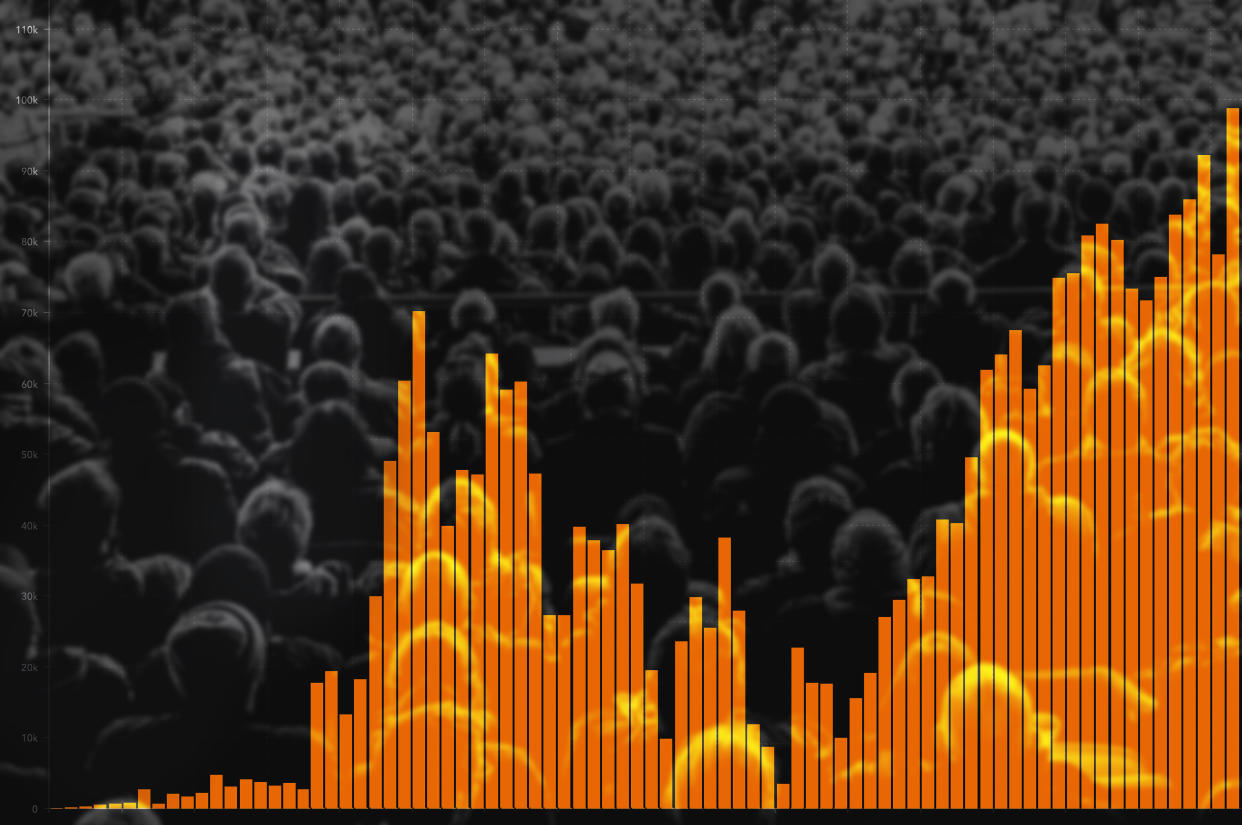Coronavirus: Which countries have experienced a second wave?

As the government prepares to further ease lockdown restrictions from Saturday, worries persist over the possibility of a second wave of coronavirus.
Scenes at Bournemouth beach during last week’s heatwave have stoked fears that people are going to be unable to stick to the new “one metre plus” social distance rules.
Second wave fears have also been highlighted by reports that Leicester could be subjected to a localised lockdown following a spike in cases.
Sir Jeremy Farrar, a member of the government's Sage scientific advisory group, has said there was a real danger of the virus spreading faster as further lockdown measures are eased.
And last week, in an open letter published in the British Medical Journal, health leaders called for a "rapid and forward-looking assessment" in preparation for a second spike in infection rates.

"The job now is not only to deal urgently with the wide-ranging impacts of the first phase of the pandemic, but to ensure that the country is adequately prepared to contain a second phase,” the leaders wrote.
What is a second wave?
A “second wave” is when the number of infections goes up and then comes back down again – each cycle is one “wave” of coronavirus – yet there is no formal definition.
In order to experience a second wave, then, a country would have to have already brought case levels down substantially.
Health officials worldwide have warned that lockdown restrictions are being lifted too soon by countries keen to jumpstart their damaged economies, but most have so far managed to any spikes enough to be called a second wave of coronavirus.
Which countries have seen a second wave?
South Korea last week South Korea became the first nation to officially announce a second wave of coronavirus cases.
The country had been hailed a success story for its handling of the worldwide virus pandemic. However, the Korea Centers for Disease Control said last Monday that a rise in new cases in the capital Seoul signalled a second phase of the pandemic.
The spike came after a national holiday weekend when lockdown measures were eased.
India imposed a new lockdown on 15 million people after recording a huge spike in new infections two weeks ago.
Having gradually lifted a nationwide lockdown, the number of coronavirus cases soared by more than 10,000 in one day and a second wave in several cities was reported.

Iran, one of the first countries to suffer a significant outbreak, was also one of the first to experience an apparent second wave, but seems to have managed to stem the spread, suffering just over 10,000 deaths so far.
Data suggests the country may have already reached the peak of its second wave and is now on the decline again.

Spain reported a fresh rise in cases in mid-June but officials said “localised outbreaks” were under control and a second wave of COVID-19 has not been experienced. Spain has now opened up its borders and beaches for UK tourists.
Israel has seen coronavirus cases rising consistently for several weeks, but the country remains one of the least badly affected regions of the Middle East.
Turkey eased lockdown in early June and by mid-June an increase in cases had been recorded, showing early signs of a potential second wave.
The USA, which has reported more than 100,000 deaths from coronavirus, has failed to drop below 20,000 new cases a day since 1 April and after six weeks of falling, new cases are now approaching the highs of over 30,000 a day, last seen in April.
Texas, Arizona, Florida and California are the worst-hit states.
The country has recorded the highest number of COVID-19 deaths in the world, followed by Brazil, Russia and the UK.
Coronavirus: what happened today
Click here to sign up to the latest news, advice and information with our daily Catch-up newsletter
Read more about COVID-19
How to get a coronavirus test if you have symptoms
How easing of lockdown rules affects you
In pictures: How UK school classrooms could look in new normal
How public transport could look after lockdown
How our public spaces will change in the future
Help and advice
Read the full list of official FAQs here
10 tips from the NHS to help deal with anxiety
What to do if you think you have symptoms
How to get help if you've been furloughed


